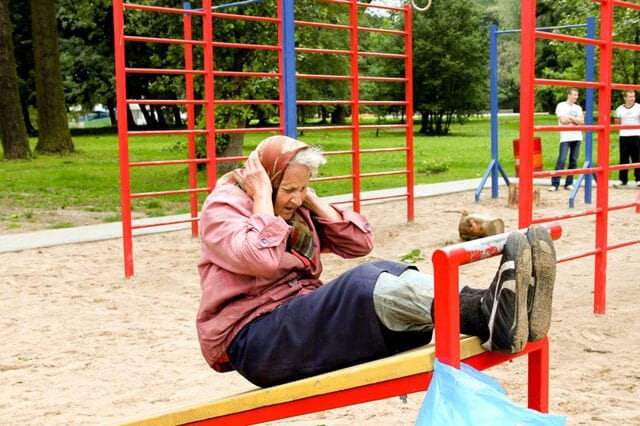
As governments and innovators around the world aim to address the simple fact that our population is ageing rapidly and we need to establish ways and solutions so that older adults can lead healthy, active and engaged lives.
One way of supporting these aims is through the implementation of ‘seniors playgrounds’. Which is something people often associate for children, but now with the obvious positive health benefits is being recognised for older adults too, not to mention overtime a reduction in health care expenditure.
Whilst seniors playgrounds in Australia are only a mere thought, they have been well established in China and Japan since the 1990s and in Europe and Canada since the 2000s. Throughout Barcelona there are about 300 seniors parks alone, which is equivalent to about one in every town throughout the region. With the idea growing in popularity around the world, the United States having recently established playgrounds also. Although the American’s have adapted the design so that it accommodates for multiple generations, not just seniors.
Seniors playgrounds have been a well received additional across other parts of the world. That is helping older adults not only stay physically active but also socially engaged in society as they age. Older adults are encouraged to participate with low-impact exercise equipment such as static bikes, body flexors and elliptical machines that are all designed to promote flexibility, balance and strength. A number of studies has proven the added benefits of exercise for older adults to be:
Other health benefits to seniors for visiting the playground is that it acts as a community gathering spot, increasing seniors interactions that overtime can contribute to addressing social isolation and loneliness.
The World Health Organisation recommends people over the age of 65 should participate 150 minutes of moderate-intensity physical exercise every week. if that can’t be achieved then an alternative is at least 75 minutes of vigorous-intensity physical activity weekly.
Seniors, with poor mobility are advised to perform physical activity 3 or more days per week to prevent falls and improve balance. With muscle strengthening activities, involving major muscle groups initiated 2 days per week. For seniors that are restricted due to health conditions then it’s important they still do something, it’s recommended they participate in physical activity within their abilities.
The Australian Bureau of Statistics (ABS, 2013a) projects between 2011 and 2031 that the number of people aged 65 years and over will increase from 3.1 million to 5.7 million.
Whilst many local councils and seniors organisations have started planning for a more age friendly environment, there is much we can learn from around the countries to ensure we moving at a pace to meet the demand. So that we have many more environments that can incorporate suitable outdoor spaces that promote exercise, social interaction,and playfulness for people as they age.
With so much enthusiasm around the world about seniors playgrounds we wonder how long until we start to see such initiatives in Australia. There doesn’t appear to be too many downsides to such an initiative. The most important questions however would need to be asked to our seniors “Would this be something you would want to use and participate in if it was in your local community?”